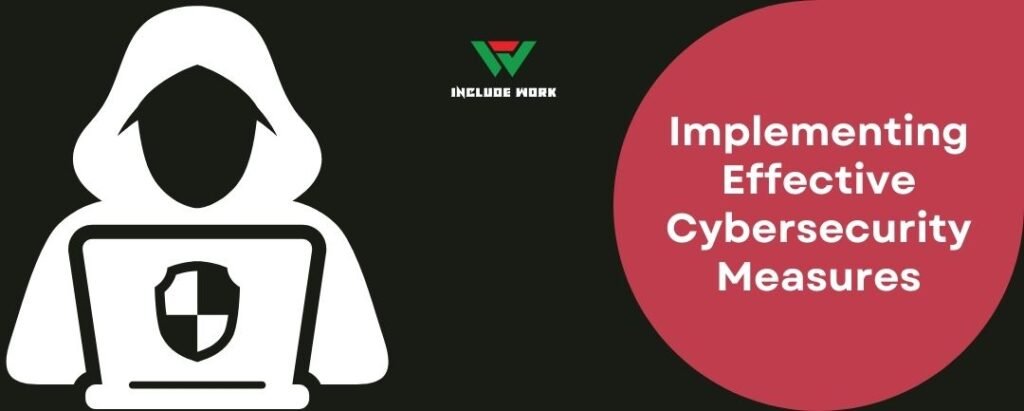IT Management for Small Businesses is crucial for their growth and efficiency. In today’s digital age, small businesses must leverage technology to stay competitive. Effective IT management can streamline operations, enhance productivity, and ensure data security. Small businesses often face unique challenges in managing their IT needs due to limited resources and expertise. This guide will help small business owners understand the importance of IT management and how to implement it effectively.
Table of Contents
Importance of IT in Small Businesses
Small businesses might not have the vast resources of larger companies, but the strategic use of IT can level the playing field. Here’s how technology makes a big difference:

Efficiency and Productivity: Automating routine tasks with IT tools allows employees to focus on more critical, value-added activities. This shift not only boosts productivity but also increases job satisfaction as staff engage with more meaningful work.
Customer Relationships: Technology offers numerous platforms to understand and engage with customers better, from CRM systems that track interactions to social media tools that provide direct communication channels.
Access to New Markets: An online presence, supported by digital marketing and e-commerce platforms, opens up new geographical markets beyond local customer bases.
Data-Driven Decisions: Small businesses can harness data analytics to make informed decisions. By analyzing trends and customer behavior, businesses can optimize their operations and marketing strategies for better results.
Competitive Edge: Keeping up with technology trends can provide small businesses with a competitive advantage. For example, adopting cloud computing provides flexibility and scalability which are vital for growth.
effective IT management empowers small businesses to operate more professionally and competitively, mirroring the capabilities of their larger counterparts without the hefty price tag.

Key Components of IT Management for Small Businesses
Effective IT management in small businesses revolves around several core components that ensure technology serves its purpose – to support and enhance business operations. Here are the fundamental areas to focus on:
Technology Planning and Strategy: This involves understanding your business goals and how technology can support them. It’s about choosing solutions that grow with your business and don’t become obsolete quickly.
Infrastructure Management: Keeping the hardware and software running smoothly is crucial. This includes managing servers, networks, computers, and mobile devices to ensure they are secure and performing well.
Cybersecurity: Protecting sensitive information from cyber threats is non-negotiable. This involves setting up firewalls, using antivirus software, and ensuring that all systems are regularly updated to mitigate risks.
Data Management and Backup: Regularly backing up data ensures that a business can recover quickly from data loss. Effective data management also helps in adhering to compliance standards and protecting privacy.
Vendor Management: Small businesses often rely on third-party providers for various IT needs. Managing these relationships is crucial to ensure you receive timely support and value for money.
IT Support and Maintenance: Ongoing support is vital for addressing issues as they arise. Having a reliable IT support system helps minimize downtime and keeps everything running smoothly.
User Training and Support: Ensuring that employees understand how to use IT tools effectively is key to maximizing investment in technology.
By focusing on these components, small businesses can create a robust IT management framework that supports their business objectives and drives growth.
Choosing the Right Technology Solutions
Selecting suitable technology solutions is crucial for small businesses as it impacts every operational facet. Here’s a guide to making informed decisions:

- Assess Needs: Identify essential problems and potential process improvements. This may include discussions with team members to pinpoint difficulties and enhancement opportunities.
- Budget Consideration: Evaluate affordability. Opt for solutions providing significant value for money—not necessarily the cheapest options, but those with favorable long-term benefits.
- Scalability: Select technologies that can adapt as your business grows. These solutions should accommodate increasing needs without requiring complete replacements.
- Ease of Use: Ensure the technology is user-friendly. Overly complex systems can reduce productivity. Consider your team’s technical proficiency when selecting software or tools.
- Integration Capabilities: Choose technologies that seamlessly integrate with your existing systems. This simplifies processes and ensures continuous information flow.
- Support and Service: Assess the available support. Dependable customer service and technical support are crucial for minimizing downtime and addressing issues swiftly.
- Security Features: With rising cyber threats, it’s essential to choose technology with strong security measures. Confirm that these solutions adhere to industry standards and regulations.
By considering these factors, small businesses can invest wisely in technology that boosts their operational efficiency and growth potential.
Implementing Effective Cybersecurity Measures
Empowering Small Businesses with Tailored IT Management Solutions for Robust Cybersecurity Measures.

Educate Your Team
Human error is a frequent cause of security breaches. Regular training can help staff identify phishing scams, manage passwords effectively, and appreciate security protocols.
Use Strong Passwords and Authentication
Promoting the use of robust, unique passwords and multi-factor authentication can strengthen security across all systems.
Keep Software Updated
Regular updates to software—from operating systems to applications—can thwart attackers by closing off known vulnerabilities.
Secure Your Network
Implement firewalls, encrypt sensitive data, and protect Wi-Fi networks. Using a VPN can secure data in transit, especially for remote workers.
Regular Backups
A solid data backup plan ensures recovery of crucial business information after cyber incidents or data losses.
Cybersecurity Policies
Creating and enforcing security policies controls resource use, manages sensitive data, and streamlines incident reporting.
Invest in Security Tools
Antivirus and anti-malware programs provide extra protection against digital threats.
By following these guidelines, small businesses can greatly minimize their exposure to cyber threats, protecting their assets and reputation.
Training and Supporting Employees on IT Use
Proper training and support for employees on IT use are essential for maximizing the effectiveness of technology in a small business. Here’s how to ensure your team is well-equipped:

Regular Training Sessions: Conduct regular training sessions to familiarize employees with new technologies and updates to existing systems. This helps to ensure that everyone is using IT resources efficiently and correctly.
On-Demand Resources: Provide access to manuals, FAQs, and online tutorials that employees can refer to anytime they need help. This supports continuous learning and problem-solving.
Feedback Mechanism: Implement a system where employees can report issues and provide feedback on the IT tools they use. This can help identify areas for improvement and ensure that the technology meets their needs.
IT Support Access: Ensure that employees have easy access to IT support. A dedicated email, phone line, or chat system for IT queries can help resolve issues quickly and keep your operations running smoothly.
Encourage IT Literacy: Foster an environment that encourages ongoing IT education and literacy. Consider offering incentives for employees who pursue further IT training or certifications.
Security Training: Since security is a major concern, include specific training sessions on cybersecurity best practices, such as recognizing phishing attempts and securing personal devices used for work.
By investing in comprehensive training and support, small businesses can enhance employee productivity and ensure that their technology investments deliver maximum benefits.
Budgeting and Resource Allocation for IT
Effective budgeting and resource allocation are vital for managing IT in a small business. Here’s how to ensure you allocate your IT budget wisely:

Assess IT Needs: Start by assessing your current and future IT needs. This involves understanding what technologies and resources are critical for achieving your business goals.
Plan for Upgrades and Maintenance: Allocate funds for regular updates and maintenance of your IT systems. This prevents larger expenses down the line due to system failures or security breaches.
Prioritize Investments: Focus on technologies that offer the most return on investment. Prioritize solutions that improve efficiency, security, or customer satisfaction.
Consider Operational Costs: Beyond initial purchase costs, consider the ongoing operational expenses like licensing fees, subscriptions, and support services.
Set Aside an Emergency Fund: Have a contingency fund for unexpected IT expenses, such as emergency repairs or urgent upgrades, which can disrupt your budget if not planned.
Review and Adjust: Regularly review your IT spending to ensure it aligns with your business objectives and make adjustments as necessary. This helps in staying on top of changing technology trends and business needs.
By carefully planning and managing your IT budget, small businesses can ensure they invest in the right technology without overstretching their financial resources.
Conclusion
Effective IT management is crucial for small businesses aiming to prosper in a digital environment. Strategic planning, adopting appropriate technologies, robust cybersecurity, employee training, and careful budget management enable small businesses to use technology not merely as a support tool but as a driver of growth. These practices not only protect against technological challenges but also promote sustainable development and success in the digital era.

